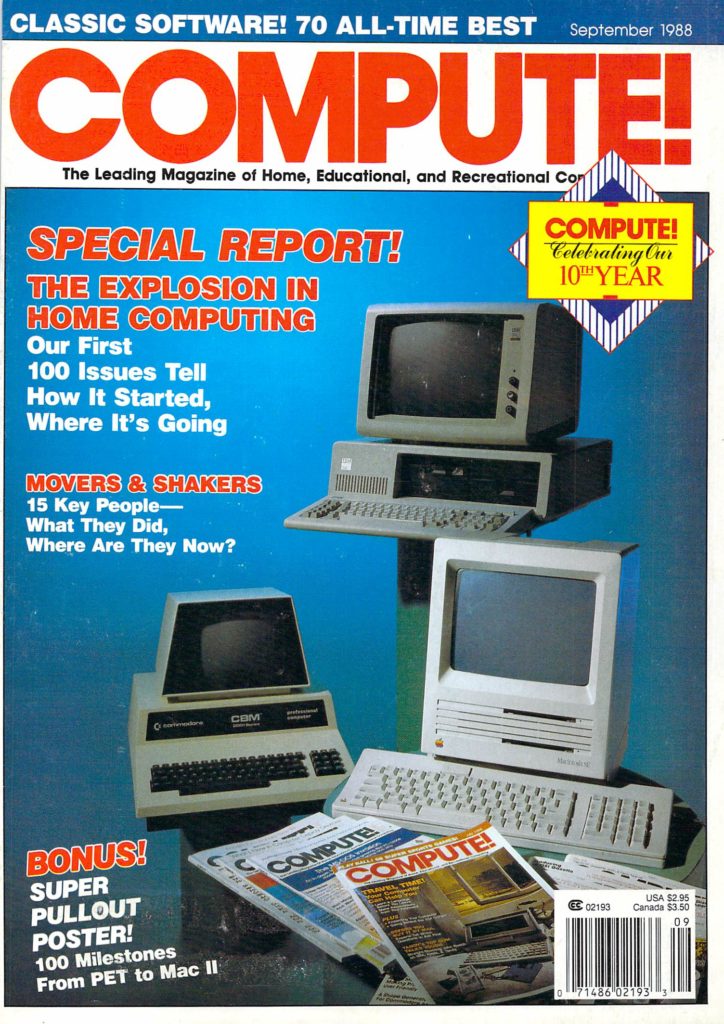Source: Compute! – Issue Number 100 – September 1988
Compute! was one of the most popular computer magazines for many years. It covered a wide variety of systems throughout its life including the Commodore 64, Apple II, Amiga, Atari ST, and of course PCs among others. The 10th anniversary issue (issue number 100) from September 1988 includes the following:
Features
- Years Gone By – We chart the history of home computing by offering up covers and articles fro the last nine years of COMPUTE! magazine.
- That Was Then, This Is Now – What were 15 movers and shakers in the computer industry doing nine years ago, and what are they doing now?
- Milestones in Computer History – Our birthday present to you – the most important computer hardware, software, and publications on a collector’s edition poster.
- Conversations – Epyx Grows with David Morse – Epyx’s CEO spells out what it takes to move an entertainment publisher past the $100-million mark.
- Buyer’s Guide – Classic Software – Browse through these 70 classic programs from personal computing’s history.
Reviews
- The Three Stooges
- The Graphics Studio
- Ultima V
- Wordbench
- Stealth Mission
- Twilight’s Ransom
- Read ‘n Roll
Compute! Specific
- MS-DOS
- 64 & 128
- Apple II
- Amiga
- Macintosh
- Atari ST
- Hints & Tips
Columns
- Editorial License – Throughout its first 100 issues, COMPUTE! has been the magazine that always speaks first and clearest to the home user.
- News & Notes – CES wears many guises, Nintendo faces great DRAM drought, and GEOS gets to two.
- Gameplay – Comics on computers take on the columnist, and win.
- Impact – The first 100 issues of COMPUTE! have seen the magic of a revolution’s first decade.
- Discoveries – Writing, the key to success in school, can be fun and fruitful with a word processor.
- Levitations – The Consumer Electronics Show sure isn’t what it used to be.
- Letters – COMPUTE! helps take a bite out of crime!
- New Products! – Zak saves everyone’s IQ, PC gets palm-sized, sports explode from Accolade, and more new products.
…and more!



